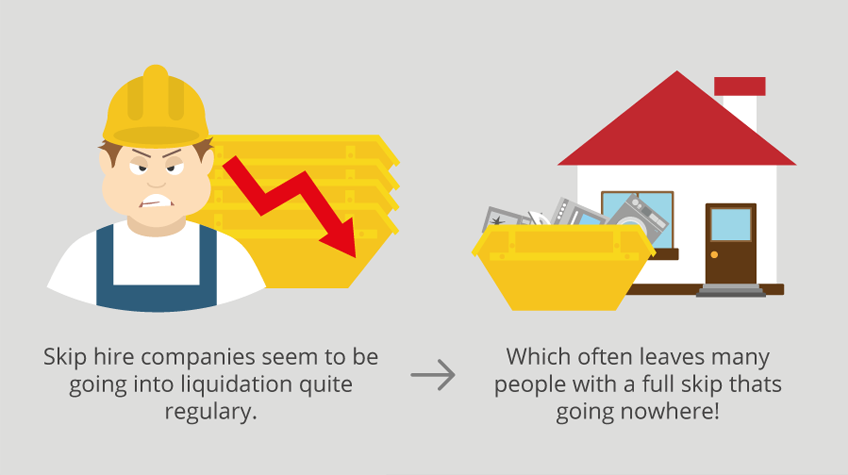A Comprehensive Look at Company Administration UK: Results on Employees and Workflow
A Comprehensive Look at Company Administration UK: Results on Employees and Workflow
Blog Article
The Process and Effects of a Business Entering Management
As a firm encounters monetary distress, the choice to go into administration marks an important point that can have far-reaching implications for all entailed celebrations. The procedure of getting in administration is detailed, involving a collection of actions that aim to navigate the company in the direction of possible recuperation or, in some cases, liquidation.

Overview of Company Management Refine
In the realm of corporate restructuring, a vital first step is acquiring an extensive understanding of the detailed business management process. Firm administration describes the formal bankruptcy procedure that aims to save a monetarily distressed firm or attain a much better outcome for the business's lenders than would be feasible in a liquidation circumstance. This process involves the visit of a manager, that takes control of the firm from its supervisors to examine the financial scenario and determine the most effective strategy.
During administration, the company is granted defense from lawsuit by its financial institutions, offering a moratorium duration to create a restructuring plan. The administrator deals with the company's administration, creditors, and other stakeholders to design a strategy that may involve selling business as a going problem, reaching a business voluntary plan (CVA) with lenders, or ultimately placing the firm right into liquidation if rescue efforts show useless. The key objective of firm management is to make best use of the return to financial institutions while either returning the firm to solvency or closing it down in an organized fashion.
Roles and Obligations of Administrator
Playing a critical function in managing the business's decision-making processes and financial events, the manager presumes substantial obligations during the corporate restructuring procedure. The main obligation of the manager is to act in the very best rate of interests of the company's lenders, intending to achieve one of the most favorable outcome possible. what happens to employees when a company goes into liquidation. This entails conducting a comprehensive analysis of the company's monetary situation, creating a restructuring strategy, and carrying out approaches to maximize returns to lenders
Furthermore, the manager is accountable for liaising with different stakeholders, consisting of staff members, suppliers, and governing bodies, to guarantee openness and conformity throughout the management process. They should additionally communicate effectively with shareholders, offering regular updates on the company's progress and seeking their input when essential.
Furthermore, the manager plays an essential role in managing the daily operations of business, making crucial decisions to preserve connection and maintain worth. This includes examining the practicality of various restructuring alternatives, discussing with financial institutions, and eventually leading the company towards an effective exit from administration.
Influence On Firm Stakeholders
Assuming an important position in managing the company's decision-making processes and economic events, the administrator's actions throughout the business restructuring procedure have a straight effect on various business stakeholders. Investors might experience a decrease in the worth of their investments as the firm's financial troubles are resolved. Financial institutions, including vendors and loan providers, might deal with unpredictabilities concerning the settlement of financial obligations owed to them. Staff members frequently experience job insecurities because of potential layoffs or modifications in work problems as part of the restructuring efforts. Clients might experience disturbances in services or item accessibility throughout the administration procedure, influencing their trust fund and commitment in the direction of the firm. In addition, the area where the firm runs might be affected by potential task losses or changes in the firm's operations, influencing neighborhood economies. Effective interaction from the manager to stakeholders is vital in taking care of assumptions, minimizing issues, and cultivating transparency throughout the management process.
Lawful Ramifications and Commitments
Throughout the process of firm administration, careful factor to consider of the legal effects and responsibilities is critical to make sure compliance and secure the rate of interests of all stakeholders involved. When a firm goes into management, it causes a collection of lawful requirements that have to be adhered to.
Furthermore, lawful effects emerge concerning the therapy of workers. The manager has to comply with employment laws regarding redundancies, staff member civil liberties, and obligations to offer essential details to employee reps. what happens to employees when a company goes into liquidation. Failure to abide by these lawful demands can result in lawful activity versus the company or its administrators
Furthermore, the company getting in administration might have legal responsibilities with different celebrations, consisting of consumers, property owners, and distributors. These agreements need to be reviewed to identify the ideal strategy, whether to terminate, renegotiate, or satisfy here them. Failing to manage these legal responsibilities properly can cause disagreements and prospective lawful consequences. Fundamentally, understanding and fulfilling lawful obligations are essential facets of navigating a firm with the administration process.
Approaches for Firm Recovery or Liquidation
In thinking about the future instructions of a firm in management, calculated preparation for either recuperation or liquidation is important to chart a feasible course ahead. When going for firm recuperation, vital methods might consist of conducting a comprehensive analysis of business procedures to identify inefficiencies, renegotiating leases or agreements to improve money flow, and implementing cost-cutting measures to enhance earnings. Furthermore, looking for brand-new financial investment or financing alternatives, expanding earnings streams, and concentrating on look at more info core expertises can all add to a successful healing strategy.
Alternatively, in scenarios where company liquidation is considered the most suitable program of action, techniques would entail optimizing the value of possessions through efficient property sales, resolving arrearages in a structured manner, and abiding by legal needs to guarantee a smooth winding-up procedure. Communication with stakeholders, including clients, financial institutions, and workers, is essential in either situation to preserve transparency and take care of expectations throughout the recovery or liquidation procedure. Inevitably, picking the appropriate method relies on a comprehensive evaluation of the company's economic health and wellness, market placement, and long-lasting leads.
Final Thought
To conclude, the process of a firm entering administration involves the consultation of a manager, that handles the responsibilities of taking care of the company's events. This process can have significant effects for different stakeholders, including lenders, employees, and investors. It is essential for firms to carefully consider their options and techniques for either recuperating from monetary our website troubles or continuing with liquidation in order to minimize possible legal effects and commitments.
Firm administration refers to the official bankruptcy treatment that intends to save a financially distressed firm or attain a much better result for the company's creditors than would certainly be feasible in a liquidation scenario. The manager functions with the business's management, lenders, and other stakeholders to devise a strategy that may entail marketing the company as a going concern, getting to a business volunteer plan (CVA) with financial institutions, or ultimately positioning the company right into liquidation if rescue efforts confirm futile. The main objective of business administration is to take full advantage of the return to financial institutions while either returning the business to solvency or closing it down in an orderly manner.

Report this page